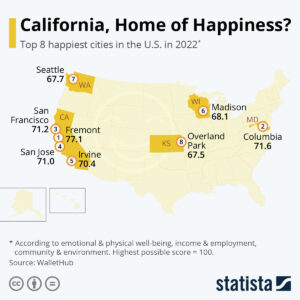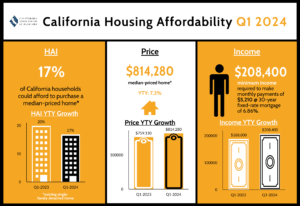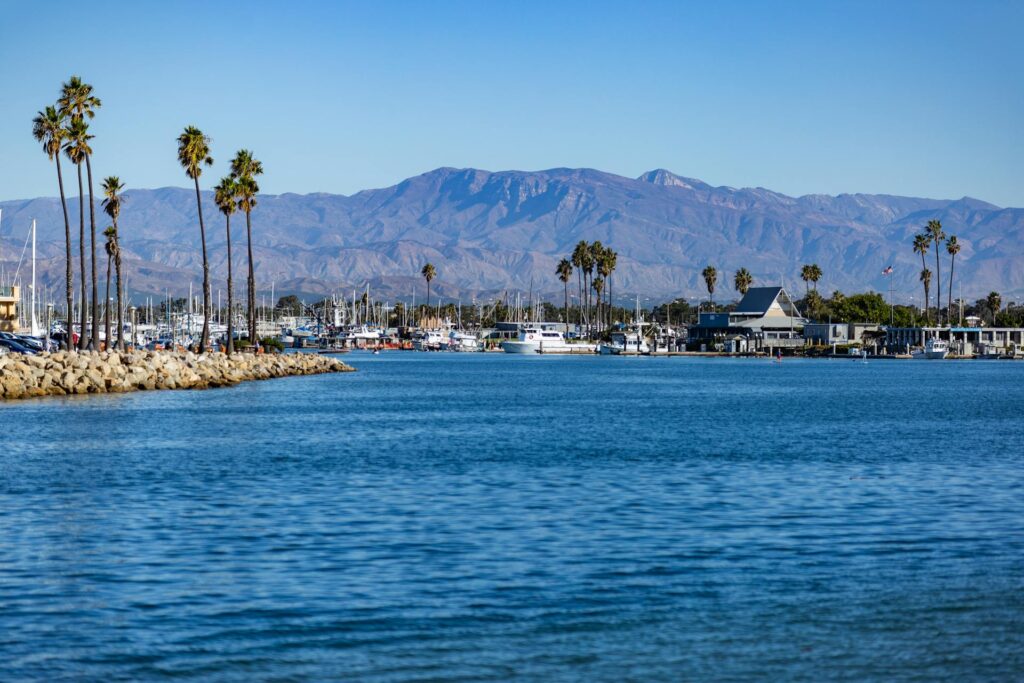Updated December 29th, 2025 by Molly B.
California. Just saying the name conjures images of golden beaches, palm trees, and an easy-breezy West Coast lifestyle.
Whether chasing sunshine, opportunity, or the allure of starting fresh in a state where reinvention is a rite of passage, moving to California in 2025 may be on your radar for good reason. But beyond Instagram-worthy coastlines and endless avocados lies a complex place of possibility and a few caveats.
Is California a good place to live?
Yes, California is a good place to live, if it aligns with your lifestyle and priorities. It’s a state of contrasts: you’ll find tech moguls and struggling artists, lush wine country and bone-dry desert, snow-capped mountains and balmy surf towns. It’s home to nearly 40 million people.

What is California Like?
Imagine waking up with a view of the ocean, spending your afternoon hiking a mountain trail, and wrapping up your evenings with Pacific-caught sushi, food truck tacos, or Michelin-starred cuisine.
That’s a slice of California living.
However, the vibes shift depending on where you land. Los Angeles pulses with ambition and traffic, San Francisco buzzes with innovation and fog, and San Diego hums with laid-back, artsy charm.
Culturally, California is progressive, environmentally conscious, and unapologetically trendsetting. It’s where tech meets entertainment, startups meet surfboards, and dreams meet detours.

The Pros and Cons of Living in California
Pros:
- Incredible Weather. Most parts of California enjoy a Mediterranean climate. Think mild winters and sunny, dry summers. Southern California is known for having some of the best weather in the United States.
- Economic Powerhouse. California has the largest economy of any U.S. state and ranks among the top five globally. From tech in Silicon Valley to biotech in San Diego, opportunities abound.
- Outdoor Paradise. Surfing, skiing, hiking, rock climbing, you name it, and California has it. You can surf in the mornings, then snowboard in the afternoons.
- Cultural Diversity. The state is one of the most ethnically and culturally diverse in the nation, reflected in its food, art, festivals, and neighborhoods.
- World-Class Education. With top-ranked public and private universities like Stanford, CalTech, and the University of California system, education here is serious business.
Cons:
- Cost of Living. California is one of the most expensive states to live in. Housing, gas, and groceries tend to cost significantly more than the national average.
- Traffic and Commutes. If you’re in or near a central metro area, traffic is more than a nuisance; it’s a lifestyle. Prepare to budget time and patience.
- Natural Disasters. Wildfires, earthquakes, and droughts are part of life here. While infrastructure is built with resilience in mind, you’ll need to be aware and prepared.
- California has one of the highest income tax rates in the country. If you’re a high earner, expect to pay your share, and then some.
- Housing Crisis. While there are many beautiful places to live, affordable housing is a challenge, especially in coastal cities.
Cost of Living in California
Living in California is not cheap. The Golden State consistently ranks as one of the most expensive places in the country to call home.
In the first quarter of 2024, California held the third-highest position in the nation for overall cost of living, with an index score of 139.8. That puts it nearly 40 percent above the national average, according to the Missouri Economic Research and Information Center.
Daily expenses such as groceries, healthcare, and utilities often cost significantly more than what you might be used to.
Grocery prices tend to be 15 to 20 percent higher than the national average, and utilities can run up to 30 percent more, especially during hot summers in inland areas. Gas prices are another factor to consider. As of April 2025, the average price for a gallon of regular gas in California was $5.25, compared to the national average of $3.76.

Housing in California
Housing in California moves fast and costs a lot. The median home price is $787,508, and rent in cities like LA and Oakland often tops $2,250. Even smaller markets aren’t cheap. Strong credit, steady income, and quick decisions are essential; this is not the place to “wait and see.”
Getting Around in California
In most of California, a car isn’t optional; it’s your lifeline. LA drivers lose 89 hours a year to traffic, and gas averages $5.25 a gallon. Transit options like BART and Metro exist but are limited. For most people, getting anywhere means budgeting time, gas, and plenty of patience.
California Job Market
California added 17,700 jobs in April 2025, with growth in healthcare, tech, and education. The unemployment rate is 5.3%, and 47% of workers hold a bachelor’s degree. If you’re skilled and job-ready, there’s real opportunity, especially in coastal metros. Just be ready for strong competition and high expectations.
Things to Do in California
Whether you’re into hiking granite cliffs, tasting your way through wine country, or chasing roller coasters with your kids, California delivers. This is a state where weekend plans can include redwoods, deserts, and world-class tacos—sometimes all in the same day.
Drive the Pacific Coast Highway (Highway 1)
Start in San Luis Obispo and head north to Monterey for a Highway 1 stretch that includes Big Sur, Bixby Creek Bridge, and Julia Pfeiffer Burns State Park. Stop at Nepenthe for ocean-view dining and watch the fog roll in at McWay Falls. Avoid night driving—there are no streetlights, and the cliffs are real.
Explore Yosemite National Park
Enter through the South Gate on Highway 41 and stop at Tunnel View for the first full shot of El Capitan and Bridalveil Fall. In peak season, take the free Valley shuttle or hike Mist Trail to Vernal Fall. If you’re going in summer, reserve your Yosemite park entry pass months in advance.
Spend a Day at Disneyland or Disney California Adventure
Get to Anaheim before 8 a.m. and use Genie+ to book your first Lightning Lane ride. Start with Indiana Jones or Radiator Springs Racers, then mobile-order lunch at Galactic Grill or Pim Test Kitchen. Expect to walk 20,000 steps and pay $30 for parking unless you stay at a Disneyland hotel.
Wander the Streets of San Francisco
Take BART to Powell Street in San Francisco and walk up to Chinatown through the Dragon Gate on Grant Avenue. From there, head to North Beach for an espresso at Caffe Trieste, then climb Telegraph Hill to Coit Tower. End the day with sunset at Crissy Field, looking straight at the Golden Gate Bridge.
The Best Time to Move to California
The best time to move to California is typically late spring or early fall. These months offer mild weather, fewer tourists, and less competition for rentals compared to the summer rush.
If you’re job hunting, aim for January through March when companies are budgeting and actively hiring. For homebuyers, spring tends to bring more listings to the market, while fall can offer better deals from motivated sellers.
Avoid peak summer if possible—moving costs are higher, traffic is worse, and temperatures in inland areas can hit triple digits.
Moving to California? Protect your new home with reliable, local security from My Secure Systems.
- California Fire Inspections: Why Compliance Is Critical for Businesses in 2025 - December 24, 2025
- How AI Is Changing Home Security - November 22, 2025
- The Most Dangerous Cities in California in 2026 - October 18, 2025



